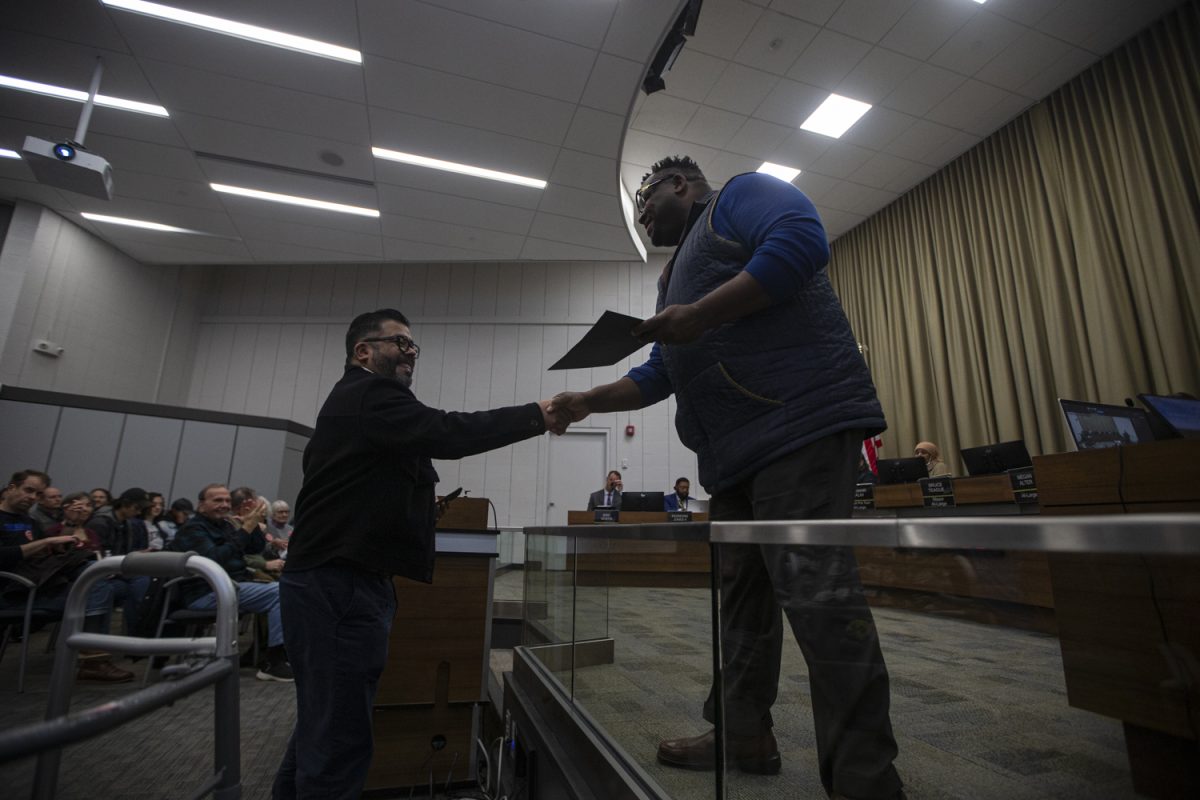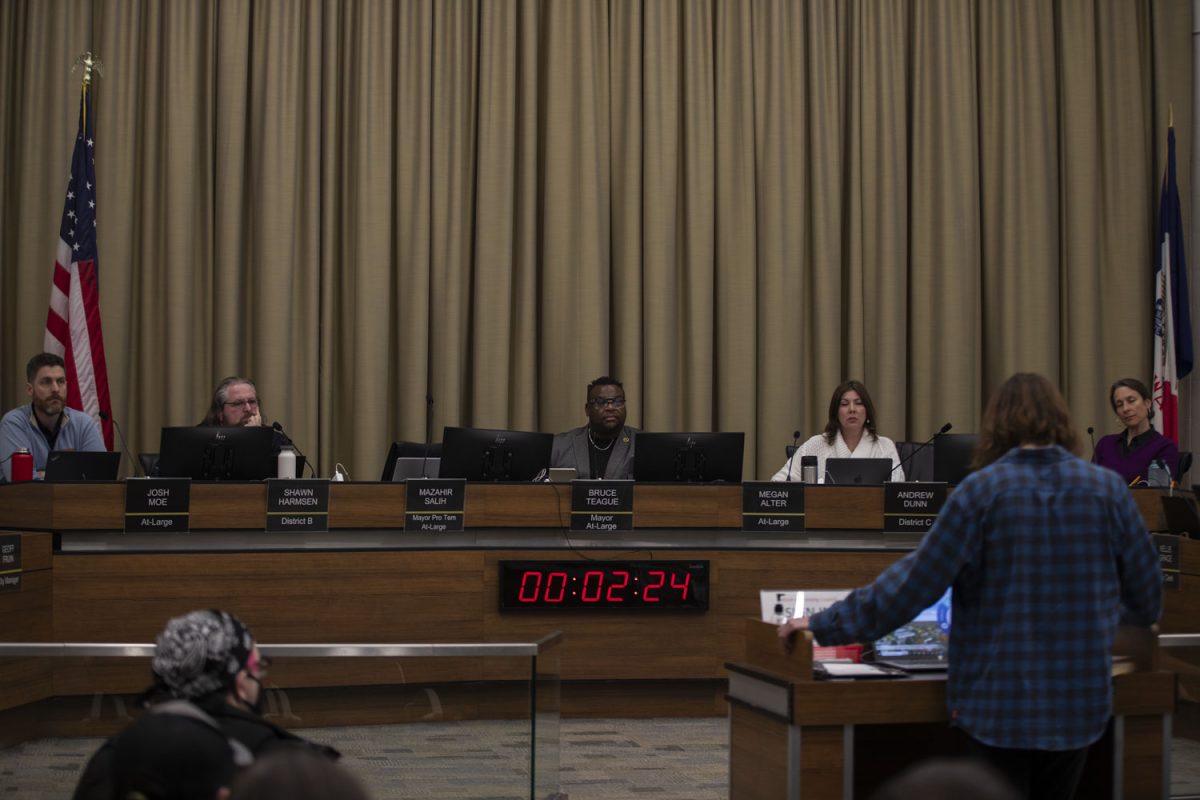
The construction boom related to the 2008 flooding has opened up the doors for more distant, possible out-of-state contractors to be more competitive with local workers, but Iowa companies still remain in the majority.
Such massive demolition, restoration, and rebuilding projects created a surplus of work for construction companies around Iowa, said Rod Lehnertz, the director of planning, design, and construction at the University of Iowa Facilities Management.
As a state agency, Lehnertz said, the university is required to publicly bid all of its construction projects and select the lowest bidder.
“We are by state mandate required to award to the lowest responsible bidder,” he said. “So if a contractor from outside the borders of Iowa comes in and bids on a project, if they are the low bidder, they would be awarded that contract.”
Lehnertz said an out-of-state contractor having the lowest bid is usually not the case but that is becoming more common because local contractors have an increasing amount of work and are not as often bidding on projects.
Currently out of the 221 construction projects the UI has going, 86 percent are held by contractors in Iowa and 14 percent are contracted from out-of-state.
Although the 14 percent is an increase, Lehnertz said it does not mean out-of-state contractors are hiring out-of-state workers to do the projects.
Instead, to keep costs down, contractors almost always hire local labor — otherwise, they could not hope to bid competitively.
Traditionally distance and mobilization — getting the crew, materials, and leadership to the site — is what limits the out-of-state contractor’s ability to bid.
However, the large scale of some flood-recovery projects such as Hancher and the new music building are acting to offset these prohibitive costs and bring in bidders from farther away.
To combat this, Lehnertz said, instead of listing the larger projects as a single contract, the school breaks it up into smaller packages worth much less — such as windows, concrete, and insulation.
This reduces the lure to out-of-state contractors because it is no longer worth it for them to travel to install windows, and allows smaller, instate contractors the ability to bid without feeling overwhelmed.
However, this tactic has not alleviated all the negatives that come with increased out-of-state contractors.
Nicholas Grunzweig, chief estimator and project manager for Selzer Werderitsch, said that while his company did three flood-restoration projects for the university, he has found bidding has gotten more difficult as more out-of-state contractors have noticed all the activity in Iowa City.
“A big part of our business through all the years has been at the university and the university hospitals,” he said. “It’s probably the biggest part of our business.”
Randy Clarahan, construction executive at Mortenson Construction, said while local contractors are taking advantage of this unprecedented construction boom, they are also being very cautious, not wanting to hire more people to try to capture as much work as they can, only to have to lay people off.
Clarahan said with local contractors being given a surplus of work and the leisure to choose the right projects for their company, this opens up the market to farther away businesses to bid.
However, Lehnertz stresses, there are still benefits that come with out-of-state labor.
“When the out-of-state presence comes into our community, they’re staying here either temporarily or long term,” he said. “They’re either relocating here or they’re staying here and spending money on food and services and lodging, so the local economy benefits even when out-of-state contractors are present.”






